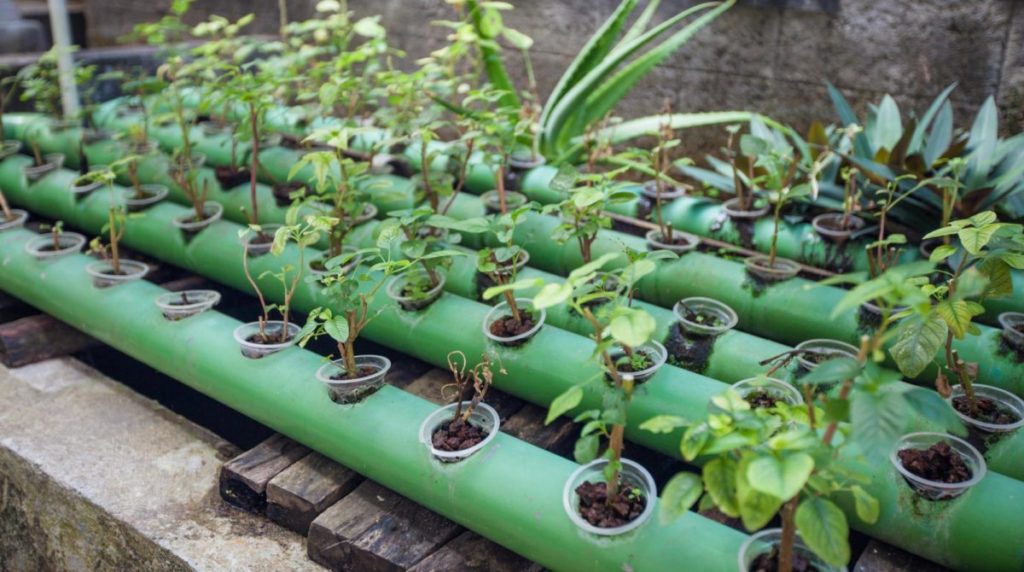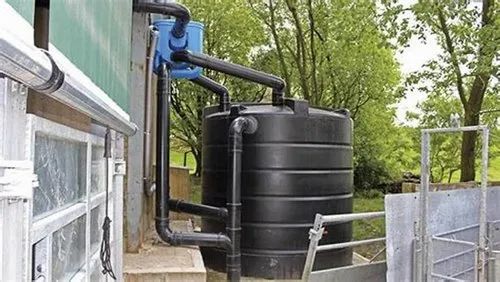Welcome to the world of permaculture gardening!
This sustainable approach to garden design emphasizes working with nature rather than against it.
By incorporating natural ecosystems, beneficial insects, and diverse plant species into your backyard oasis, you can create a thriving, self-sufficient environment that not only provides an abundance of fresh produce but also fosters biodiversity and helps mitigate climate change.
Through the principles of permaculture gardening, you’ll learn how to optimize water conservation, reduce waste and unnecessary labor, and maximize your space with multifunctional plants and features like rainwater harvesting systems and composting structures.
Get ready to transform your yard into a vibrant, resilient ecosystem that nourishes both you and the planet.
Permaculture is a sustainable gardening approach
Permaculture is a holistic and sustainable approach to gardening that seeks to work with nature, rather than against it. By using natural ecosystems and patterns, permaculture aims to create a balanced and resilient garden that requires minimal inputs and maintenance.
By mimicking natural ecosystems and patterns, permaculture creates a balanced and resilient garden that requires minimal inputs and maintenance.
This approach focuses on designing a holistic system that integrates plants, animals, and humans in a mutually beneficial way.
The goal is to create a sustainable and self-sufficient ecosystem that produces an abundance of food, while also enhancing the health of the environment and the community.
In practice, permaculture involves observing and understanding the local climate, soil, and wildlife, and then designing a garden that works with these elements to create a thriving ecosystem.
This might involve using locally appropriate plants, composting and recycling waste, and incorporating rainwater harvesting and graywater systems.
By working with nature rather than against it, permaculture gardens require fewer chemicals, fertilizers, and pesticides, making them a healthier and more sustainable choice for both people and the planet.
Whether you’re a seasoned gardener or just starting out, permaculture offers a powerful set of tools and principles for creating a sustainable and thriving garden.
By embracing the principles of permaculture, you can become a part of the growing movement towards sustainable living and help create a better future for all.
Benefits of permaculture gardening
Permaculture gardening offers many benefits, including increased biodiversity, improved soil health, enhanced ecosystem services, and reduced dependence on external inputs such as chemical fertilizers and pesticides. By adopting permaculture techniques, gardeners can also reduce their carbon footprint and contribute to a more sustainable future.
Permaculture gardening offers a wealth of benefits that not only enhance the health and productivity of your garden, but also contribute to a more sustainable future.
One of the primary advantages is the increase in biodiversity, as permaculture techniques encourage the growth of a diverse array of plants and animals.
This leads to improved soil health, as the diverse ecosystem promotes the activity of beneficial microorganisms and enhances soil structure.
Permaculture gardening can provide enhanced ecosystem services such as pollination, pest control, and nutrient cycling, all of which contribute to a more resilient and self-sustaining garden.
Furthermore, by adopting permaculture techniques, gardeners can reduce their dependence on external inputs such as chemical fertilizers and pesticides.
These inputs not only harm the environment, but also contribute to the degradation of soil health and biodiversity.
Instead, permaculture gardening focuses on the use of natural and sustainable methods, such as composting and mulching, to improve soil fertility and control pests and diseases.
This approach not only saves money and resources, but also reduces the carbon footprint of your gardening practices.
By embracing permaculture gardening, you can not only improve the health and productivity of your garden, but also contribute to a more sustainable future.
This approach to gardening promotes the conservation of natural resources, the protection of biodiversity, and the reduction of carbon emissions.
As more people adopt permaculture gardening practices, the cumulative impact can lead to a more sustainable and resilient future for all.
Designing a permaculture garden
To design a permaculture garden, gardeners should begin by observing and interacting with the existing ecosystem, including the soil, climate, and wildlife. They should then craft a design that incorporates the principles of permaculture, such as creating diverse layers, using locally sourced materials, and incorporating a variety of plant species.
Designing a permaculture garden is an intentional and thoughtful process that begins with observing and interacting with the existing ecosystem.
This includes examining the soil, climate, and wildlife to gain a deep understanding of the site’s strengths and limitations.
Armed with this knowledge, gardeners can then craft a design that incorporates the principles of permaculture, such as creating diverse layers, using locally sourced materials, and incorporating a variety of plant species.
To start, gardeners should observe the site’s topography, soil type, and existing vegetation to determine the best placement for plants and features.
They should also consider the local climate and precipitation patterns to select plants that are well-suited to the conditions.
Next, gardeners should plan for a diverse range of plant species, including those that provide food, medicine, and habitat for wildlife.
To incorporate locally sourced materials, gardeners can use native stones, woods, and other materials to construct features such as paths, walls, and raised beds.
This not only reduces the carbon footprint of the project but also creates a more sustainable and resilient ecosystem.
Gardeners should consider incorporating a variety of layers, such as groundcovers, shrubs, and trees, to create a multidimensional space that supports a diverse range of life.
Gardeners should incorporate permaculture principles such as polycultures, companion planting, and incorporating perennials to create a thriving ecosystem that is self-sustaining and produces an abundance of food and beauty.
Designing a permaculture garden is a thoughtful and intentional process that requires observation, planning, and a commitment to sustainability.
The first step in designing a permaculture garden is to observe and interact with the existing ecosystem, including the soil, climate, and wildlife.
This helps gardeners understand the unique conditions of their site and make informed decisions about the types of plants and features that will thrive there.
Next, gardeners should plan for a diverse range of plant species, including those that provide food, medicine, and habitat for wildlife.
This not only creates a resilient ecosystem but also ensures that the garden is able to produce an abundance of food and other resources.
To incorporate locally sourced materials, gardeners can use native plants, reclaimed materials, and compost to create a thriving, sustainable ecosystem.
By designing a permaculture garden in this way, gardeners can not only create a visually appealing space, but also contribute to the health of the local ecosystem and the planet as a whole.
This is achieved by mimicking nature’s patterns and using principles like stacking functions, guilds, and polycultures to create a resilient and diverse ecosystem.
As a result, the garden becomes a thriving oasis that is not only productive but also protects and regenerates the environment.
Key elements of a permaculture garden
Key elements of a permaculture garden include perennial plantings, polycultures, companion planting, hedgerows, edges, and multi-functional plants. By incorporating these elements, gardeners can create a diverse and productive garden that is easy to maintain and visually appealing.
In a permaculture garden, there are several key elements that are essential for creating a diverse, productive, and low-maintenance garden.
These elements include perennial plantings, polycultures, companion planting, hedgerows, edges, and multi-functional plants.
By incorporating these elements, gardeners can create a vibrant and thriving garden that is easy to maintain and visually appealing.
Perennial plantings are a fundamental component of a permaculture garden.
These plants, such as shrubs, trees, and perennial vegetables, provide a foundation for the garden’s ecosystem and can be relied upon for multiple harvests over the course of several seasons.
Perennials also help to build soil health and improve biodiversity by providing habitat for beneficial insects and microorganisms.
Polycultures, or the planting of multiple crops together, are another important element in a permaculture garden.
By planting a variety of crops in close proximity, gardeners can mimic the diversity of natural ecosystems and create a more stable and resilient garden.
This approach also helps to reduce pests and diseases, as different plants can provide natural forms of pest control and disease resistance.
Companion planting is a technique that involves pairing different plants together to improve their growth and productivity.
For example, certain plants can provide shade or repel pests, while others can improve soil health or attract beneficial insects.
By carefully selecting and pairing plants, gardeners can create a more balanced and productive garden.
Hedgerows, which are borders of shrubs and trees, are essential in a permaculture garden.
These boundaries not only define the edge of the garden but also provide habitat for beneficial insects, birds and other wildlife.
They help to create a sense of place and enclosure, making the garden feel more like a natural ecosystem and less like a managed space.
Soil health is also critical in a permaculture garden.
By maintaining healthy soil through the use of compost, cover crops and other soil-building techniques, gardeners can improve the overall fertility and productivity of the soil, while also reducing the need for external inputs such as fertilizers and pesticides.
The use of perennial plantings is an important element in a permaculture garden.
By using plants that come back year after year, gardeners can create a more sustainable and resilient garden that requires less maintenance and inputs.
This approach also helps to improve biodiversity, as perennials provide habitat for a variety of insects, birds and other wildlife.]]
A permaculture garden is designed to mimic the natural ecosystem, with key elements that work together to create a sustainable and thriving garden.
One of the most important elements is perennial plantings, which are plants that come back year after year.
These plants provide habitat for beneficial insects, birds, and other wildlife, while also improving soil health and reducing the need for external inputs such as fertilizers and pesticides.
Another key element of a permaculture garden is polycultures, which are multiple crops grown together in the same bed.
This approach not only increases biodiversity, but also creates a more resilient and sustainable garden.
By planting a variety of crops together, gardeners can reduce the risk of crop failure and improve soil health.
Hedgerows are another important element of a permaculture garden.
These boundaries not only provide habitat for beneficial insects and wildlife, but also help to protect the garden from extreme weather conditions and predators.
By incorporating hedgerows into the garden design, gardeners can create a more sustainable and resilient ecosystem.
In addition to these key elements, companion planting is also an important aspect of a permaculture garden.
This technique involves planting different plants together that benefit from each other’s presence.
For example, planting marigolds with tomatoes can help to repel nematodes and other pests, while also attracting beneficial insects to the garden.
Overall, a permaculture garden is designed to create a balanced and sustainable ecosystem that is self-sufficient and resilient.
By incorporating these key elements, gardeners can create a thriving and thriving garden that benefits both people and the environment.
Permaculture techniques for pest management
Permaculture techniques for pest management include using physical barriers, introducing beneficial insects, and creating a diverse ecosystem to discourage pests. Gardeners can also use homemade remedies, such as garlic sprays, to control pests without resorting to chemicals.
One of the key principles of permaculture is to create a diverse and resilient ecosystem that is self-sustaining and requires minimal input.
When it comes to pest management, permaculture techniques focus on using physical barriers, introducing beneficial insects, and creating a diverse ecosystem to discourage pests.
For example, gardeners can use row covers made of lightweight fabric to keep pests out of certain plants, or use fine mesh screens to protect plants from flying pests.
Another effective technique is to introduce beneficial insects, such as ladybugs or lacewings, that prey on pests.
These beneficial insects can be purchased at gardening stores or online and released in the garden to help control pest populations.
In addition to these physical and biological controls, permaculture also emphasizes the importance of creating a diverse and healthy ecosystem.
This can involve planting a variety of plants that are more resistant to pests and diseases, as well as incorporating perennials and polycultures into the garden design.
By creating a diverse and resilient ecosystem, gardeners can help discourage pests and reduce the need for chemical pesticides.
For gardeners who prefer to avoid chemical pesticides, there are also many homemade remedies that can be used to control pests.
For example, a simple garlic spray can be made by blending garlic cloves with water and spraying the solution on plants.
This spray can help repel pests and prevent infestations.
Similarly, a neem oil spray can be made by mixing neem oil with water and spraying it on plants to control a wide range of pests, from caterpillars to whiteflies.
By using these homemade remedies, gardeners can help protect the environment and maintain a healthy and thriving ecosystem.]]]
Incorporating permaculture techniques into your pest management strategy can greatly improve the health and resilience of your garden.
One of the most effective ways to control pests is to use physical barriers, such as fine mesh netting or fine mesh row covers, to prevent pests from reaching your plants.
These barriers can be especially useful for protecting vulnerable plants like tomatoes and cucumbers.
Another effective method for controlling pests is to introduce beneficial insects into your garden.
Beneficial insects, such as lady beetles and lacewings, can be purchased at gardening stores or online and released into your garden to prey on pests.
These beneficial insects are a great alternative to chemical pesticides, and they can be especially effective when used in conjunction with physical barriers.
Creating a diverse ecosystem is key to maintaining a healthy and thriving garden.
By growing a variety of plants, including flowers and herbs, you can create a complex web of interactions that will help keep pests in check.
This can be achieved by interplanting flowers and herbs with your vegetables, and by creating a variety of habitats, such as hedgerows and pollinator gardens, that will attract beneficial insects and other animals.
One example of a homemade pest control remedy is neem oil spray.
Neem oil is derived from the seeds of the neem tree and has been used for centuries as an insecticide and pesticide.
To make a neem oil spray, simply mix neem oil with water and add a few drops of dish soap.
This mixture can be sprayed on plants to repel pests and kill off existing infestations.
Another example of a homemade pest control remedy is garlic spray.
Garlic has natural insecticidal properties that can be used to repel pests and kill off existing infestations.
To make a garlic spray, simply mash garlic cloves and mix them with water.
Add a few drops of dish soap and the mixture can be sprayed on plants to repel pests.
Harvesting and using permaculture produce
Once a permaculture garden is established, gardeners can begin harvesting and using the produce. This may include eating fresh vegetables and fruits, preserving some for later use, and using other parts of the plants for medicinal purposes or as craft materials.
Once your permaculture garden is established, the fun begins – it’s time to start harvesting and using the produce!
You’ll be able to enjoy fresh, juicy vegetables and fruits right from your own backyard.
From crunchy carrots to sweet strawberries, the possibilities are endless.
But don’t stop there – you can also preserve some of your harvest for later use.
Try canning, freezing, or dehydrating your produce to enjoy year-round.
And if you’re feeling crafty, you can use other parts of the plants for medicinal purposes or as craft materials.
For example, you can make herbal teas from the leaves and flowers of your permaculture plants, or use the bark of certain trees to create natural dyes.
The possibilities are endless, and the act of harvesting and using your own produce can be incredibly fulfilling.
So get out there and start exploring the bounty of your permaculture garden!
Ongoing maintenance of a permaculture garden
To maintain a permaculture garden, gardeners should monitor the ecosystem regularly, making adjustments as needed to ensure that the garden remains balanced and productive. This may involve incorporating new plants, amending soil, or controlling weeds and pests.
To ensure that your permaculture garden remains healthy, productive, and balanced, it’s essential to monitor the ecosystem regularly and make adjustments as needed.
This can involve incorporating new plants, amending soil, or controlling weeds and pests.
For example, you may need to add new plants to maintain a diverse range of species and prevent any one species from dominating the garden.
You may also need to amend the soil with organic matter like compost or manure to maintain its fertility and structure.
You should keep an eye out for weeds and pests, and use natural methods to control them, such as hand-weeding or introducing beneficial insects.
By regularly monitoring and adjusting your permaculture garden, you can ensure that it remains a thriving and resilient ecosystem that provides a bounty of fresh, nutritious produce for years to come.
Learning More
Hey we’re just scratching the surface. Here are some additional resources:






